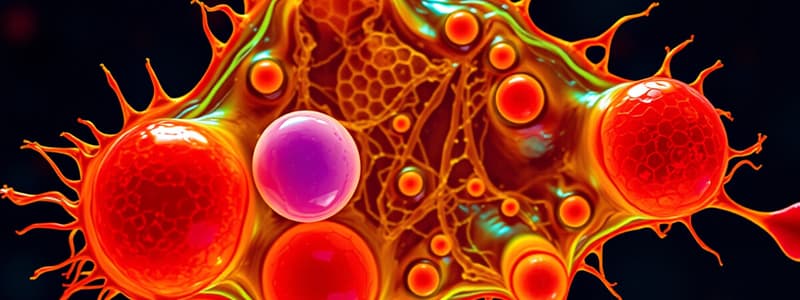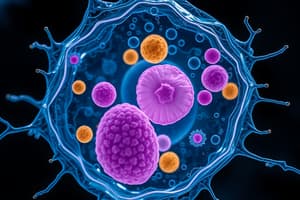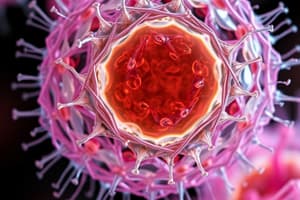Podcast
Questions and Answers
Where did cells originate?
Where did cells originate?
All organisms share a most recent common ancestor called the last universal common ancestor (LUCA).
What did LUCA contain?
What did LUCA contain?
Organic molecules and RNA-like materials.
Which structures do all living cells share?
Which structures do all living cells share?
- Cell membrane (correct)
- DNA (Genetic material) (correct)
- Ribosomes (correct)
- Chloroplasts
What is the control center of the cell?
What is the control center of the cell?
What is the function of the nuclear envelope?
What is the function of the nuclear envelope?
What does the nucleolus make?
What does the nucleolus make?
What is the role of chromatin?
What is the role of chromatin?
Flashcards are hidden until you start studying
Study Notes
Origin of Cells
- All organisms share a common ancestor known as the last universal common ancestor (LUCA).
- LUCA is estimated to have existed between 3.6 to 3.8 billion years ago and was a single-celled organism.
- LUCA possessed organic molecules and RNA-like materials essential for information storage and catalyzing chemical reactions.
- Through evolutionary processes, LUCA's descendants developed DNA and complex cellular structures.
Cell Organelles
- Organelles are referred to as "little organs," functioning as distinct membranous compartments within cells.
Fundamental Structures of Cells
- Every living organism is composed of cells that contain the following structures:
- A cell membrane that regulates the movement of substances in and out.
- Cytosol, the aqueous component of cytoplasm where various organelles reside.
- DNA as the genetic material that encodes the organism's characteristics.
- Ribosomes, the sites of protein synthesis in the cell.
Control Center of the Cell: Nucleus
- The nucleus serves as the control center, housing the genetic information required for cellular functions and activities.
Components of the Nucleus
- Nuclear Envelope: A double membrane that separates the nucleus from the cytoplasm, protecting the genetic material.
- Nucleolus: A structure within the nucleus responsible for synthesizing ribosomal RNA (rRNA) and assembling ribosomes.
- Chromatin: Composed of DNA and proteins, chromatin serves to package DNA into dense structures for efficient storage and regulation of gene expression.
Studying That Suits You
Use AI to generate personalized quizzes and flashcards to suit your learning preferences.




